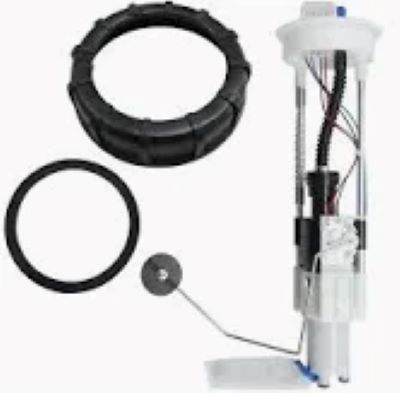The air pressure change, lack of oxygen all play a role in the fuel pumps performance at different altitudes. Air is less dense and has lower oxygen levels at greater heights, which affects the way engines combust. Fuel pumps are designed to supply the engine with a constant pressure of fuel but performance can vary by altitude.
Air Pressure and Fuel Delivery At sea level, atmospheric pressure is around 14.7 psi but drops to about 12.1 psi at 5,000 feet (and even lower at higher altitudes). Because the fuel pump is pushing against less atmospheric pressure in thin air, it might feel like the pump is working less hard (though obviously the demands on proper regulation of an engine's fuel-air mixture grow hugely as you ascend). While the normal range for a fuel-injected system's fuel pump is always around 30 to 60 psi, it may not be enough to support lower levels of oxygen in high elevations.
Economy & Performance: In high-altitude areas, more dense air means more oxygen molecules per volume while the relatively low pressure makes it hard to push the mixture inside. However, the drawback with this is that an out-of-balance stoichiometric ratio may affect fuel economy and in some cases decrease performance —up to 15% lower horsepower on fume systems higher than 5000 feet. It reveals that some vehicles will have altitude compensation systems that adjust fuel delivery based on air density to optimize the fuel-air mixture and prevent over-fueling.
Electronic Fuel Injection (EFI): Many production EFI systems feature sensors that tailor the performance of a fuel pump to altitude so the air-fuel ratio remains spot on. These sensors, which can include the mass airflow sensor (MAF) or the manifold absolute pressure sensor (MAP), allow your vehicle’s computer to control, and adjust the fuel pump in relation to air flow or content as necessary.

Another Altitude Impact Example: At the 2021 Pikes Peak International Hill Climb, racecars had to go from a starting altitude of 9,390 feet to an elevation of 14,115 feet at the summit. Several drivers were running fuel systems which increase performance, but still found they have less power down the straights. Thinner air meant that their fuel pumps had to work alongside the engine's fuel management systems—adjustments needed to be made to stem power loss resulting from altitude.
One of the co-founders of Rolls-Royce, Henry Royce once said “Strive for perfection in everything you do”. In the world of automotive engineering, perfection means making sure every system, including fuel pumps like this one, will work as designed even under extreme altitude shifts.
For those thinking- hmm, I wonder if my sweet lifted vehicle with particle separator and high altitude kit option has a stout fuel pump setup check out the primer on carb and EFI systems and their relationship to air pressure delivery system of fuel verses motor performance! Modern fuel pumps are tuned to adjust, but the tradeoff for excessive altitude or a moderately adjusted powertrain without having an atmosphere sensor is performance. Simply find the best pumps that are robust in creating and dispensing fuel across Mucho altitude changes at Fuel Pump.
